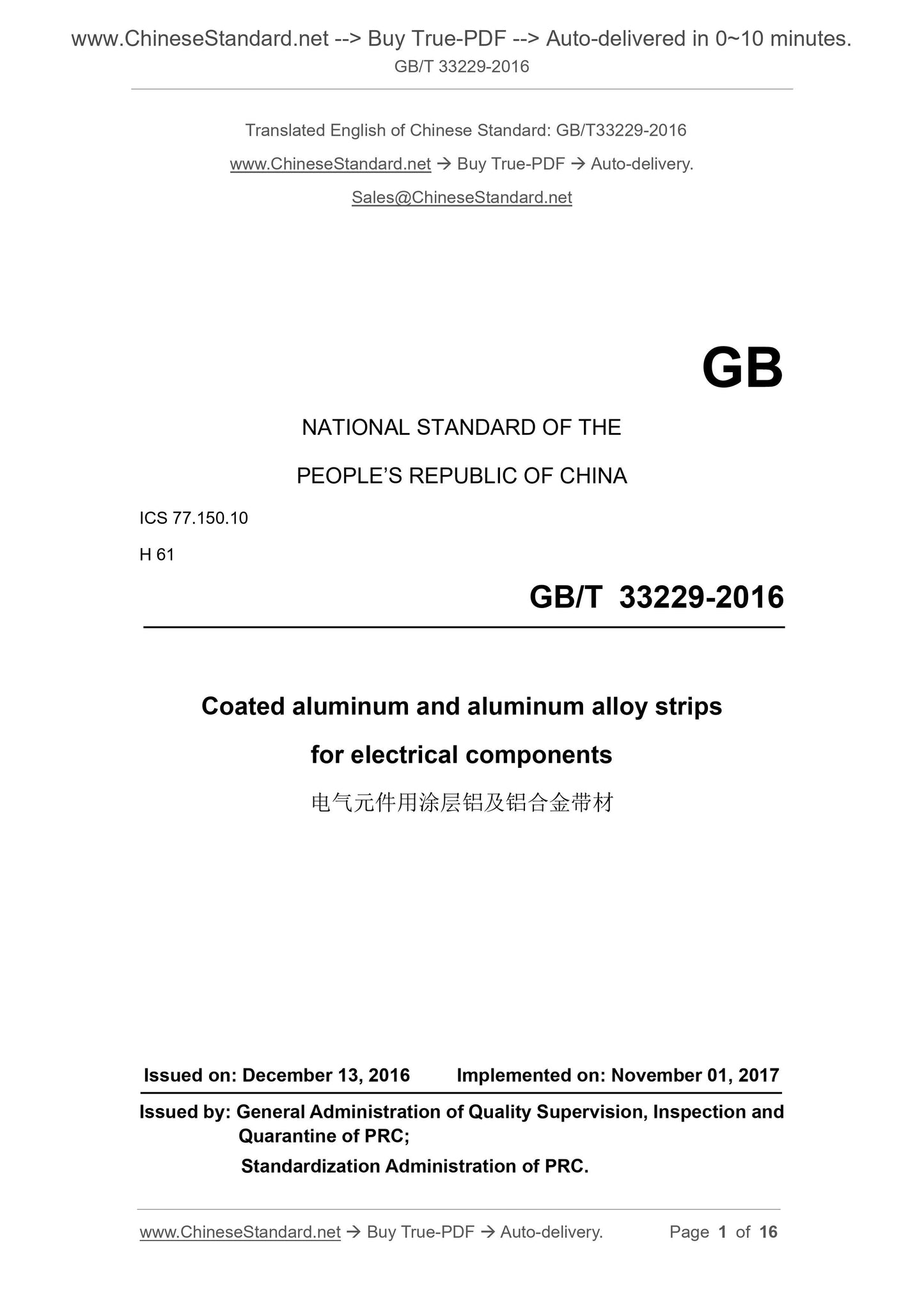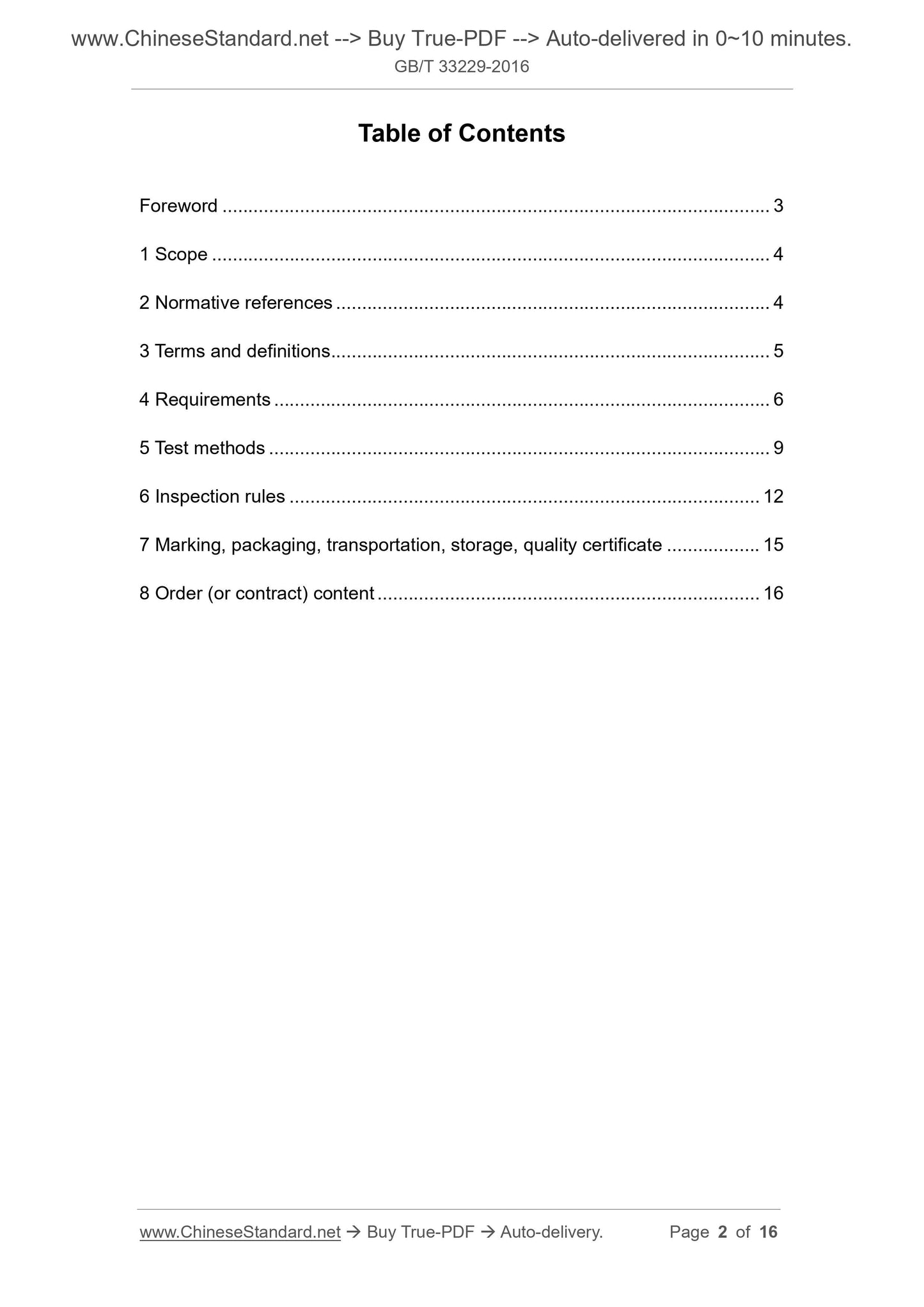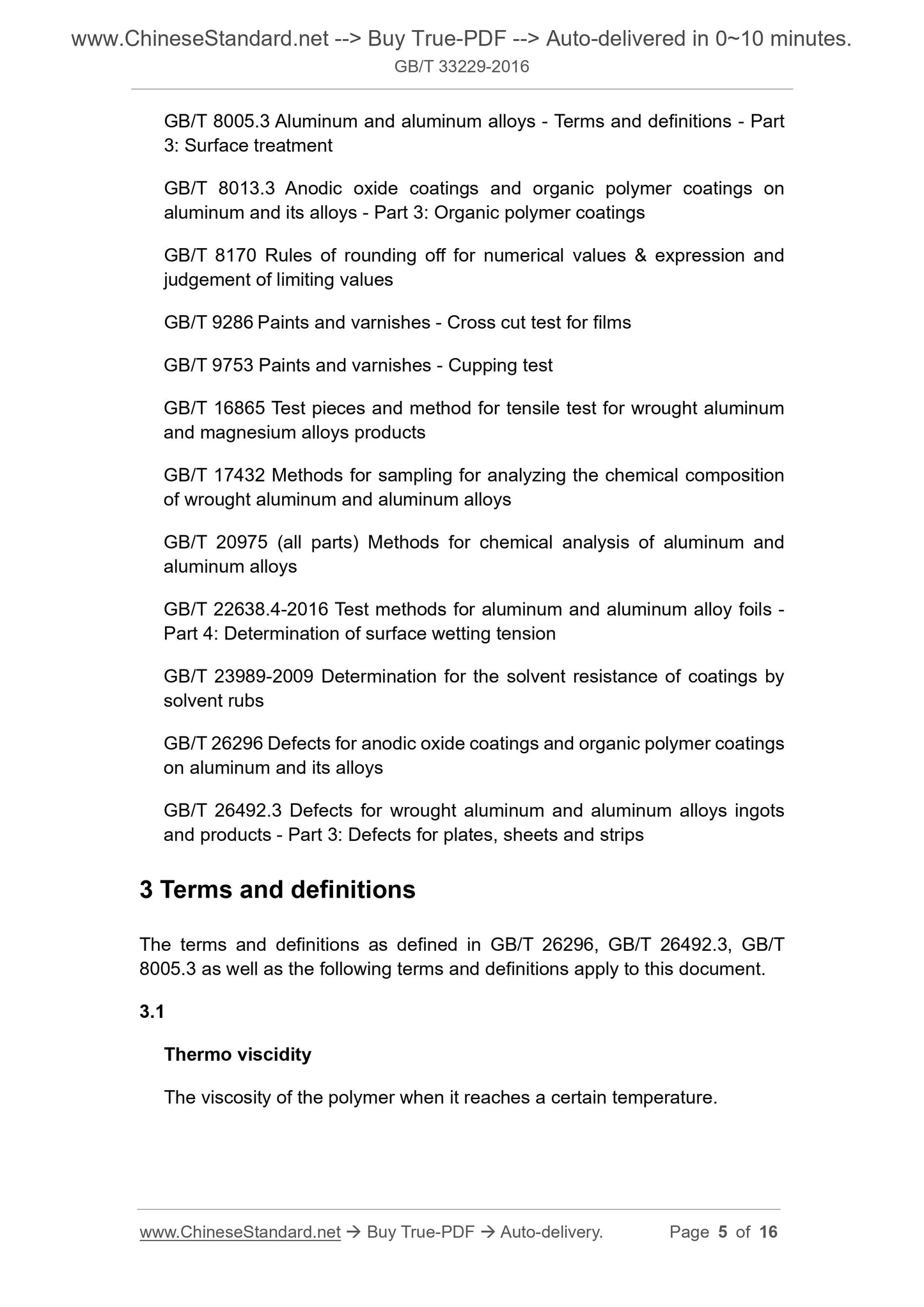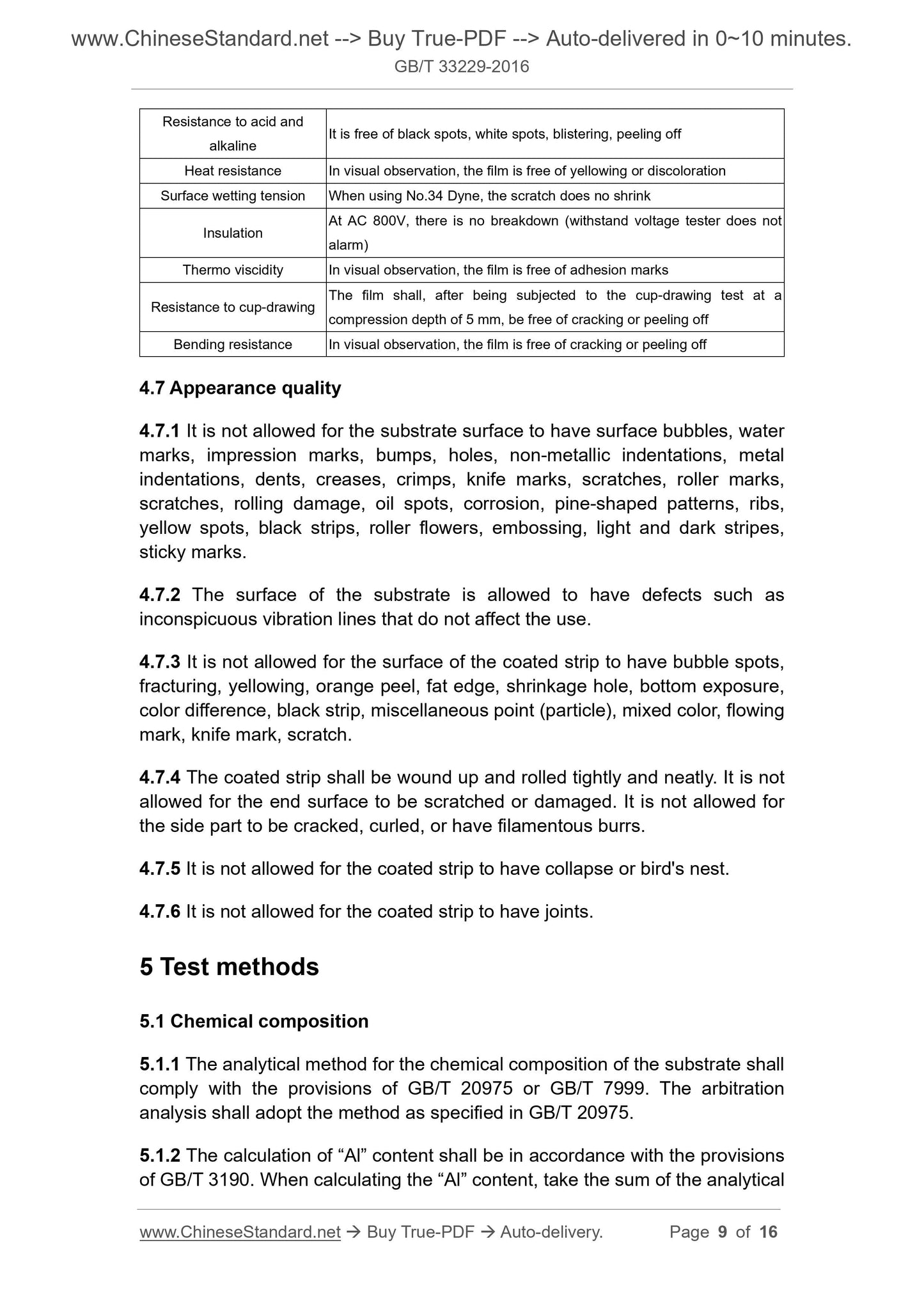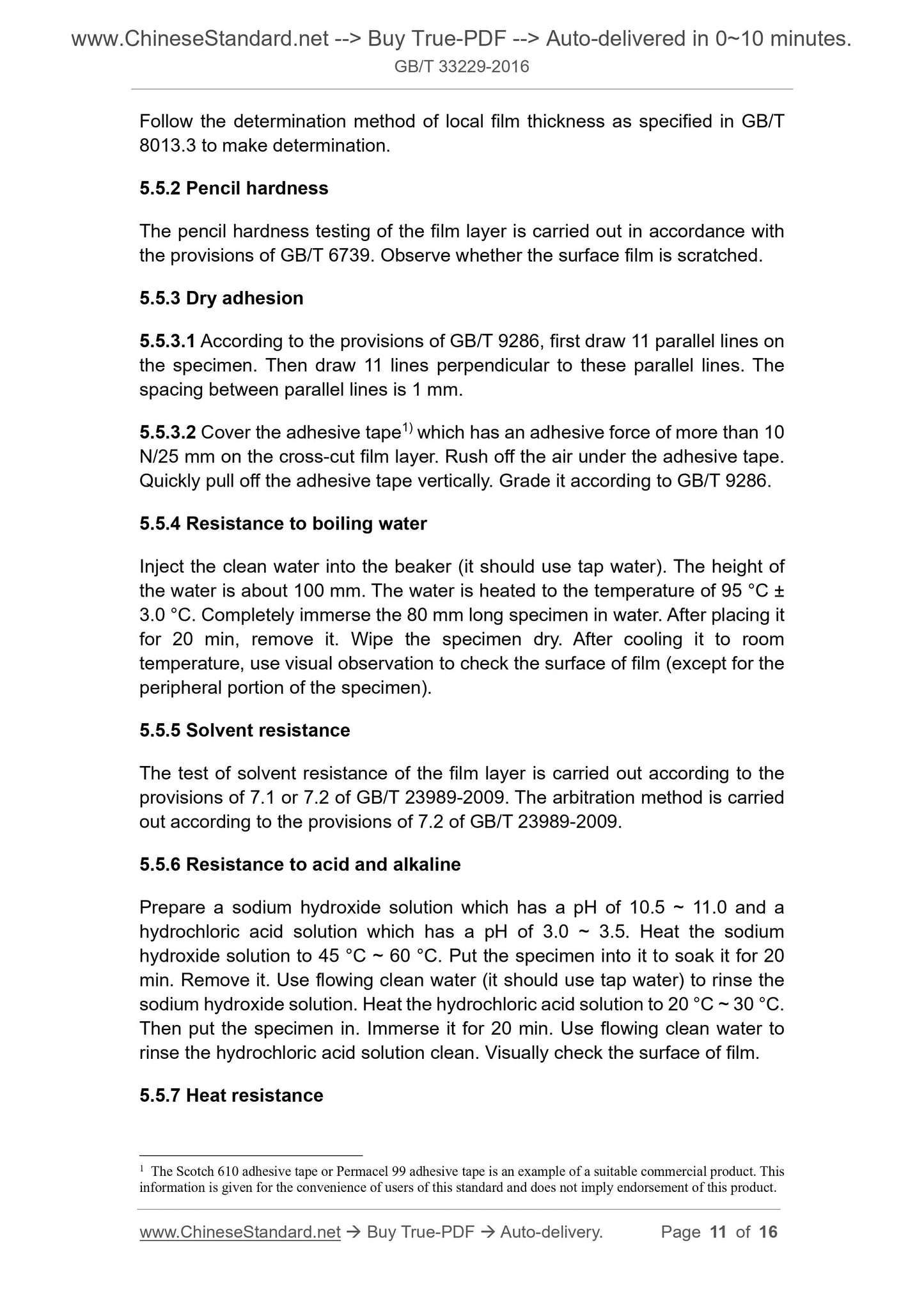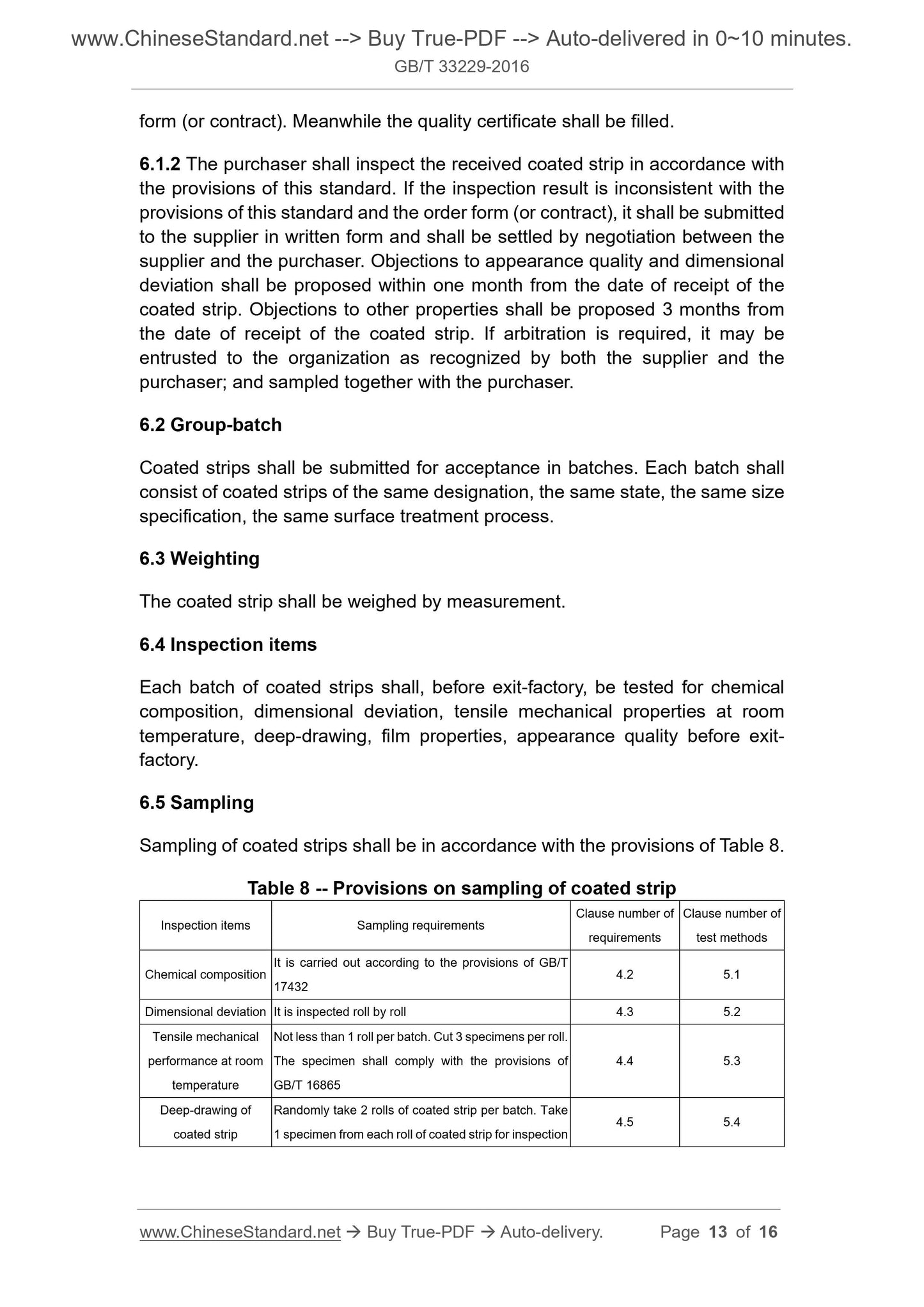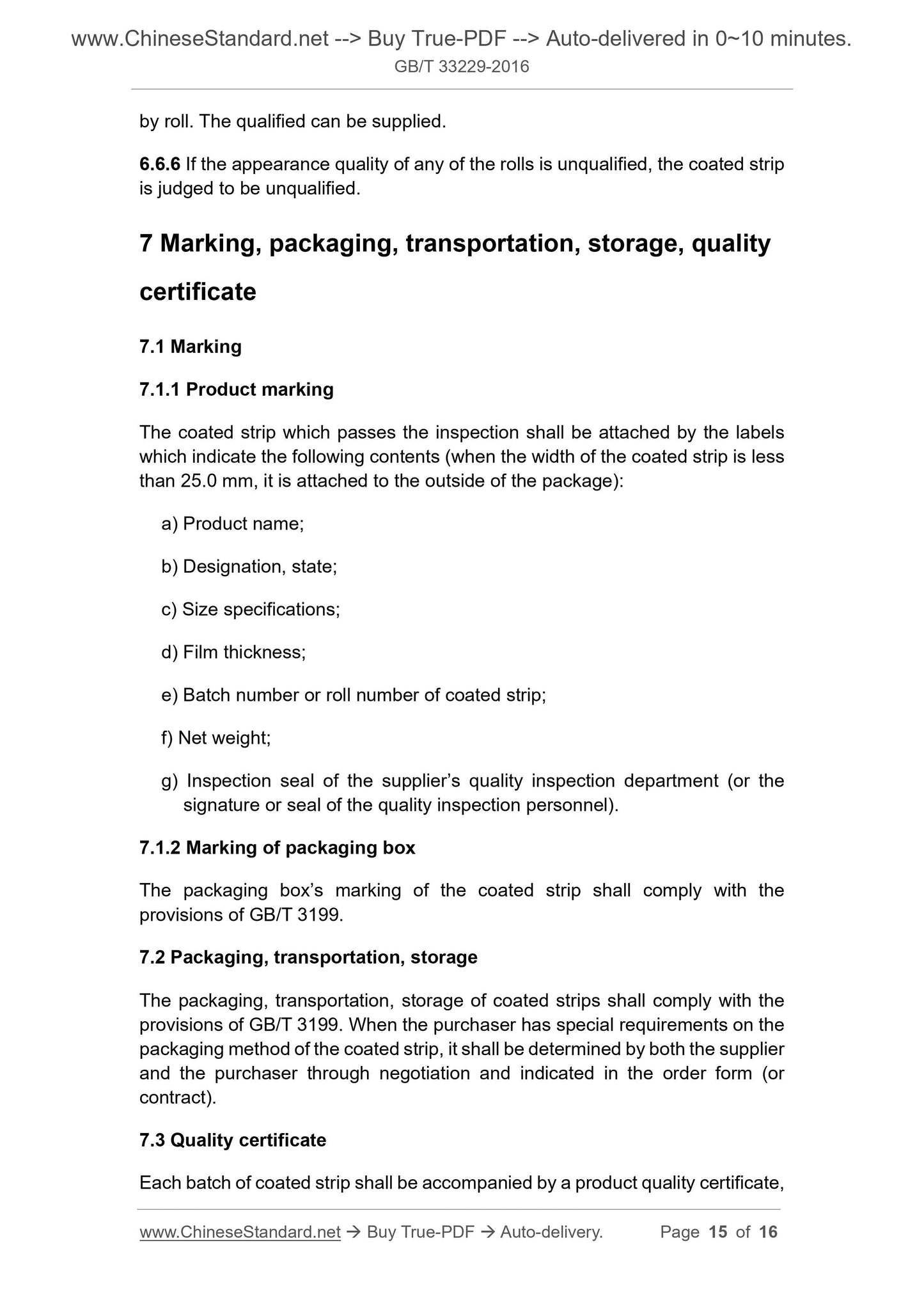1
/
of
8
www.ChineseStandard.us -- Field Test Asia Pte. Ltd.
GB/T 33229-2016 English PDF (GB/T33229-2016)
GB/T 33229-2016 English PDF (GB/T33229-2016)
Regular price
$150.00
Regular price
Sale price
$150.00
Unit price
/
per
Shipping calculated at checkout.
Couldn't load pickup availability
GB/T 33229-2016: Coated aluminum and aluminum alloy strips for electrical components
Delivery: 9 seconds. Download (and Email) true-PDF + Invoice.Get Quotation: Click GB/T 33229-2016 (Self-service in 1-minute)
Newer / historical versions: GB/T 33229-2016
Preview True-PDF
Scope
This standard specifies the terms and definitions, requirements, test methods,inspection rules, marking, packaging, transportation, storage, quality certificate,
order form (or contract) of coated aluminum and aluminum alloy strips for
electrical components.
This standard applies to aluminum and aluminum alloy polyurethane roller
painted strips (hereinafter referred to as coated strip) which are used for
packaging the enclosures of such electrical components as solid capacitors,
liquid capacitors, chip capacitors, film capacitors, electrolytic capacitors, lithium
batteries.
Basic Data
| Standard ID | GB/T 33229-2016 (GB/T33229-2016) |
| Description (Translated English) | Coated aluminum and aluminum alloy strips for electrical components |
| Sector / Industry | National Standard (Recommended) |
| Classification of Chinese Standard | H61 |
| Classification of International Standard | 77.150.10 |
| Word Count Estimation | 14,121 |
| Date of Issue | 2016-12-13 |
| Date of Implementation | 2017-11-01 |
| Regulation (derived from) | National Standard Notice No.169 of 2016 |
| Issuing agency(ies) | General Administration of Quality Supervision, Inspection and Quarantine of the People's Republic of China, Standardization Administration of the People's Republic of China |
Share
